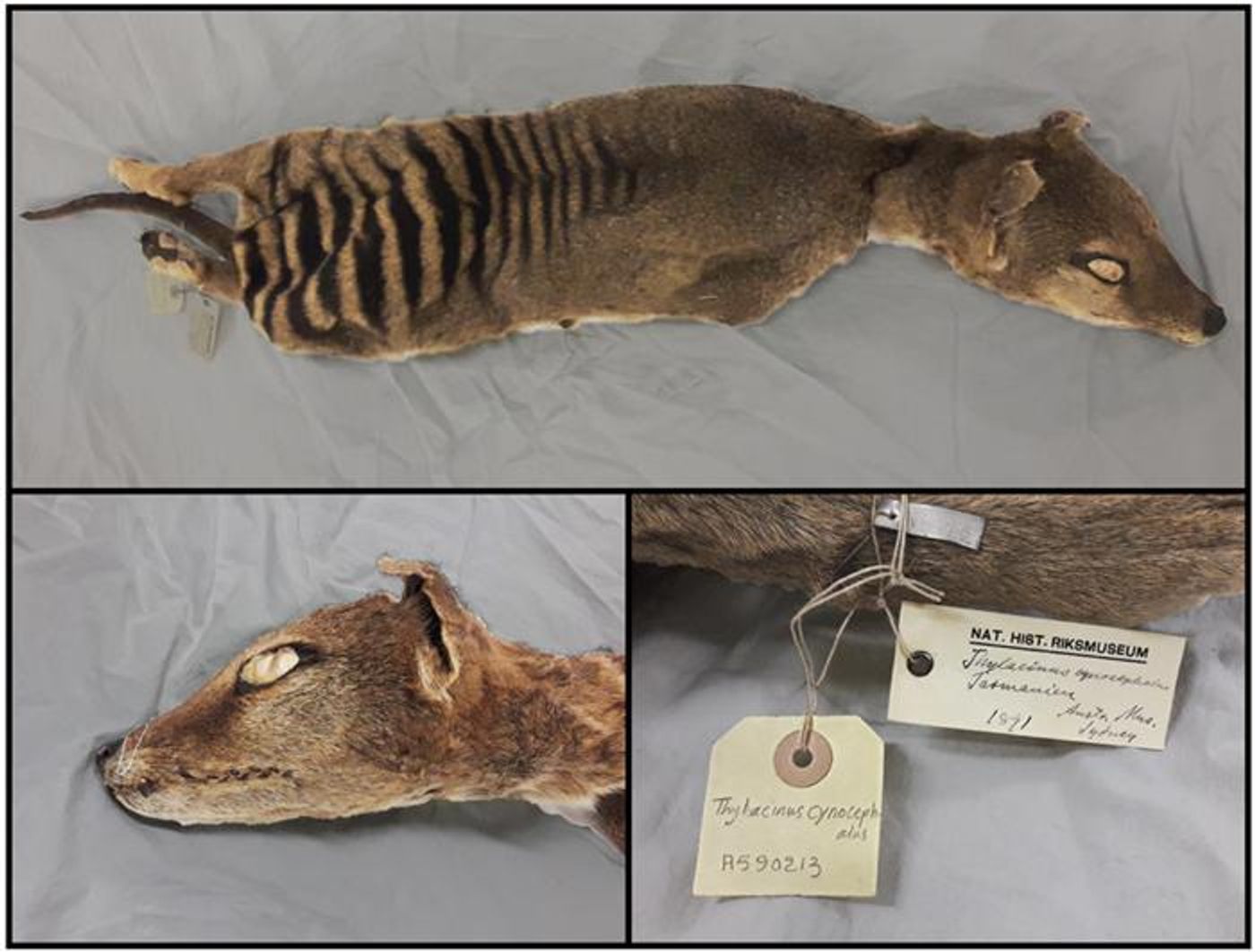In a Major Breakthrough, Intact RNA is Recovered From an Extinct Animal
When scientists are working with RNA in the lab, they have to take a lot of precautions because RNA degrades so easily. When tissue specimens are used for RNA extraction, they are typically used immediately after they are obtained, because preserving intact RNA in tissues can present many challenges. In some cases, tissues can be frozen immediately after being taken from a live animal so the RNA can be isolated later. It's been thought that RNA will break down quickly, and that it has to be handled in special ways and stored and extremely cold temperatures or else it won't be useable, especially for sensitive methods like sequencing.
Now in a major breakthrough, scientists have extracted intact RNA from an extinct animal, and they were able to sequence it. The RNA was isolated from a 130-year-old Tasmanian tiger that had been kept in a museum for all this time. Even though the animal was dessicated and kept at room temperature, the researchers were able to obtain RNA that was of such high-quality, they could reconstruct the transcriptome in skin and skeletal muscle cells. The findings have been reported in Genome Research.
Because RNA molecules are made in cells when active genes are expressed, and act as a transcript of those genes, the RNA that is present in a cell can provide a snapshot of which genes were active in a cell or tissue at one point. For the first time, investigators have been able to obtain this data for an extinct species.
The Tasmanian tiger, which is also called the thylacine, was a marsupial that once lived on the island of Tasmania, part of the Australian continent. After the island was colonized by Europeans, the animal was hunted to extinction. The last living Tasmanian tiger died in a Tasmanian zoo in 1936.
The habitat of the Tasmanian tiger is still mostly intact, so if the animal is brought back to life, it would have a place to live. It may also help the local ecosystem if it's restored. However, actually creating a normal Tasmanian tiger will require an understanding of how its genes are expressed in different tissues, which the transcriptome can help tell us about.
"Resurrecting the Tasmanian tiger or the wooly mammoth is not a trivial task, and will require a deep knowledge of both the genome and transcriptome regulation of such renowned species, something that only now is starting to be revealed," said lead study author Emilio Mármol, a postdoctoral researcher at Stockholm University.
This research could have major implications for efforts to understand and potentially resurrect species that have gone extinct. It could also provide new insights into RNA viruses, some of which have caused pandemics.
"In the future, we may be able to recover RNA not only from extinct animals, but also RNA virus genomes such as SARS-CoV-2 and their evolutionary precursors from the skins of bats and other host organisms held in museum collections," added study co-author Love Dalén, a Professor of evolutionary genomics at Stockholm University.
Sources: Stockholm University, Genome Research









